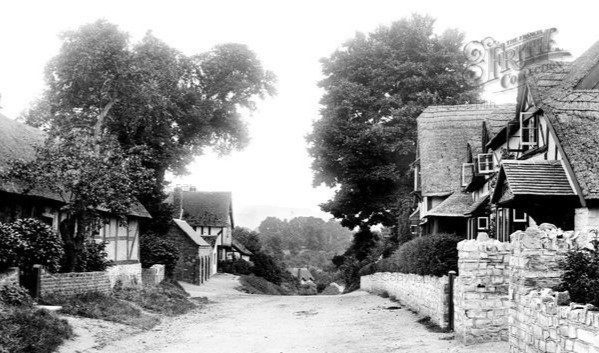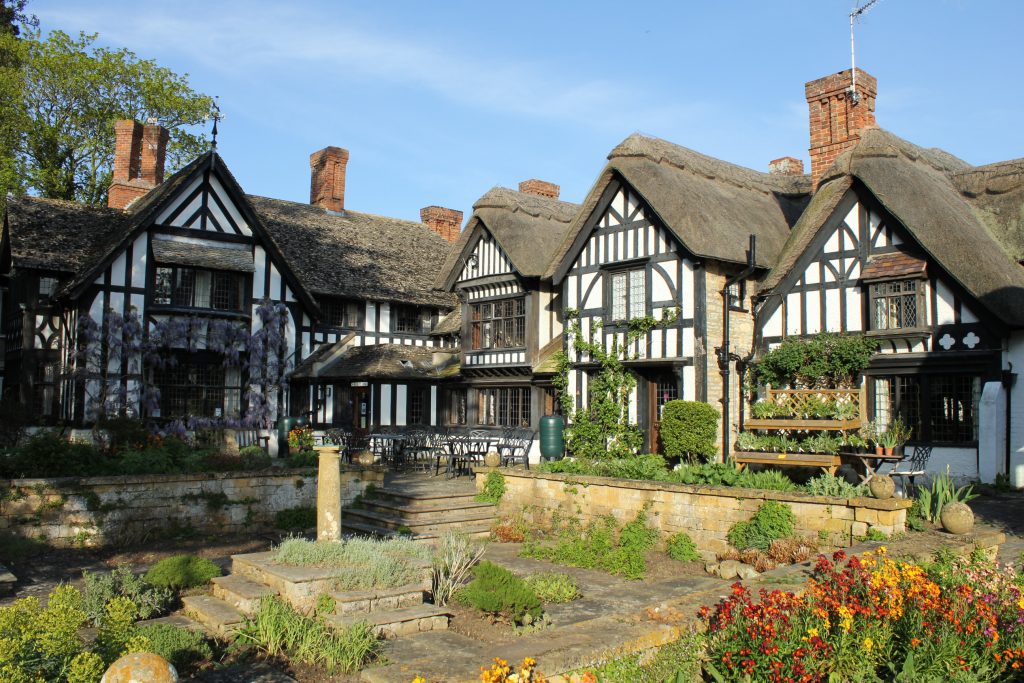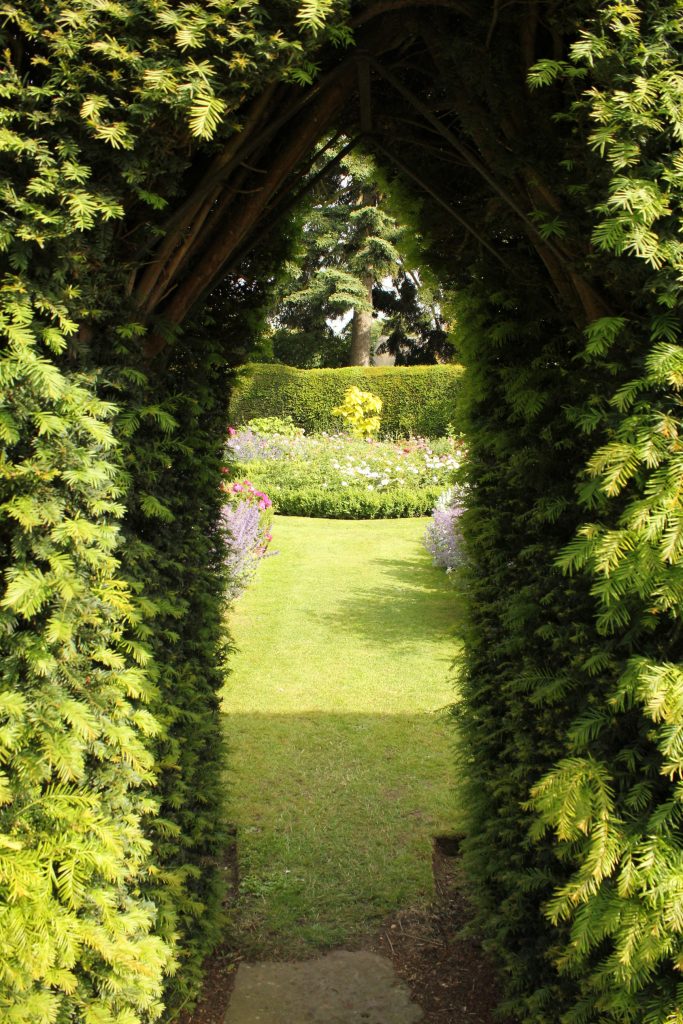

Cropthorne Village is an ancient village dating from before the Norman Conquest and featured in the Domesday Book of 1086, being listed as “Cropetorn”. However there’s historical reference to a settlement being here as far back as 708CE, known as “Croppenporne”. It is said that King Offa (757 – 796CE), who was king of the Mercians, had a summer palace on the site now occupied by Cropthorne Court at the top end of the village.
That makes sense as it would have had a very fine (and strategic) position overlooking the Vale and across to the Malvern Hills, and the proximity of the River Avon as both defence and a transport route would be helpful. The soil is very fertile with nutrients transported to it via the regular flooding of the river, so it would have been good for growing food (as it still is today).
King Offa made a gift of the village to the Church during his reign, and so the village has connections with the Church going back a long time. A later owner (Mr Avery), in his desire to extend the land around his property, had to purchase it from the Worcester Diocesan Registrar in 1913. The seals on the purchase document included the then Archbishop of Canterbury (Randall Thomas Davidson) and the Bishop of Worcester (Huyshe Wolcott Yeatman Biggs).
In 1291 King Edward 1st visited Cropthorne, as did King Charles 1st in 1644, however we’ve not had any Royal visitors since!
The House was originally built as three labourers cottages sometime in the late 16th or early 17th centuries, perhaps circa 1580 – 1620. If you stand behind the sunken garden to the rear of the House and look at that part of it covered by the thatched roof, you can still see the outlines of each of the three houses.
These houses had gardens, orchards and out-houses, but sometime later the three houses were converted into a single farmhouse. It was certainly in this form by 1865 as there’s a record of a conveyance carried out then.
In 1891 Sir William Lawson-Tait, an eminent surgeon working in Birmingham, purchased the house from Mr Allen Lankaster Haynes of Evesham for £500, the house then being known as “Home Orchard”. Sir William set about modernising the property including adding a windmill to the roof to pump water up from the river to flush the toilets. Sir William renamed the property “The Den”, which is why the small property in the grounds situated near the entrance to the car-park is now known as “The Den”.
Sir William soon offered the House for rent, firstly to Mr Samuel Keeling and then to Mr Henry Howard Avery, at £65pa. Sometime between 1898 and 1903 it appears Avery became the owner of the The Den, paying £500 for the property. If you look at the gable above the dinning room area from outside (rear of House) you will see HHA 1904 carved into the wood. Avery further modernised the property adding a new wing (that part of the house with a tiled roof), and the sunken garden feature.
It has been suggested that the garden of Holland House was designed by Sir Edwin Lutyens in 1900. However, there’s no direct proof of this. One thing that is certain is that a sundial in the garden is one of Lutyens’ designs. The gardens included a tennis lawn and dovecot together with many borders and decorative trellis. Magazine photographs of the gardens before the 1920’s show the paved and sunken garden that is easily recognizable today. Many of the low boxed hedges that are used as borders and paths are still as originally planted.


In 1920 Avery sold the House to Amy Elizabeth Holland (widow of Colonel Ellis Holland of Cropthorne Court) for the sum of £6400. At some point in the ownership of Mrs Holland the house again changed name, this time to “The Old House”. Amy Holland was very much younger than Colonel Ellis when they married and he died early into their marriage and there were no children.
By 1944 Mrs Holland was hosting training for Sunday school teachers at the House, and in October 1945 the House hosted its first “retreat” for St Stephen’s Church, Redditch. Mrs Holland moved out of Holland House in 1946, giving the House to the Diocese of Worcester to be used as a Retreat House, and moved into Pound House (the large black and white building on the corner of Middle Lane). The House and grounds remain in the possession of the Diocese and Holland House CIO (a registered charity) – being an independent Christian Ecumenical charity – is a tenant of the Diocese. The tenancy is of “full repairing lease”, which means that we pay a very low rent (pepper-corn rent) but have to fund all the repairs, from leaky taps to re-thatching the roof, from our own means, that is our income and donations.
A new wing (still known as the ‘new block’) was built in 1963 to provide sixteen bedrooms, additional bathroom facilities and a conference room for the increasing numbers of people coming to stay at the House. In 1964 the Chapel was built (this had previously been situated in what is now the Library).
Forty seven years later, in 2011, the New Block was closed for six weeks and completely re-furbished, including re-cladding the inner walls and providing modern conferencing facilities. In 2013 the long-held vision of a bedroom facility to accommodate disabled folk overnight was finally realised with a new room added to the rear of the House opposite the Conference room. This room included two beds (one for a carer and a bed adapted for use by a guest with disabilities), turning space for a wheel-chair and a wet-room. A further en-suite room was added as a second story.
In 2018, after just 12 months of fundraising, the Chapel was also completely refurbished at a cost of £66,000 with all the single-glazed windows replaced, including the iconic sanctuary window that faces the garden, and the walls and ceiling being re-clad with energy saving material.
Holland House is a Christian Retreat Centre open to people of all faiths and none, to explore what it means to be “In harmony with Creation”. This means that grounded in the Christian faith, it seeks to follow the example of Christ in offering a loving response to whoever comes, in ways that are appropriate to the visitor, the context of Christian faith, and the practicalities of the environment. Individuals, small groups or larger groups use the house for both religious and secular activities (for example, teachers’ meetings), well-being (such as Yoga) and creative activities (such as painting, making music, writing), or just to have a time of quiet and refreshment.
The House runs its own programme of events across the year and hosts events put on by third parties. It also has a lively Interfaith programme bringing together Christians, Muslims, Jews, Buddhists, Sikhs, Bahais, Unitarians, Quakers and Hindus.

